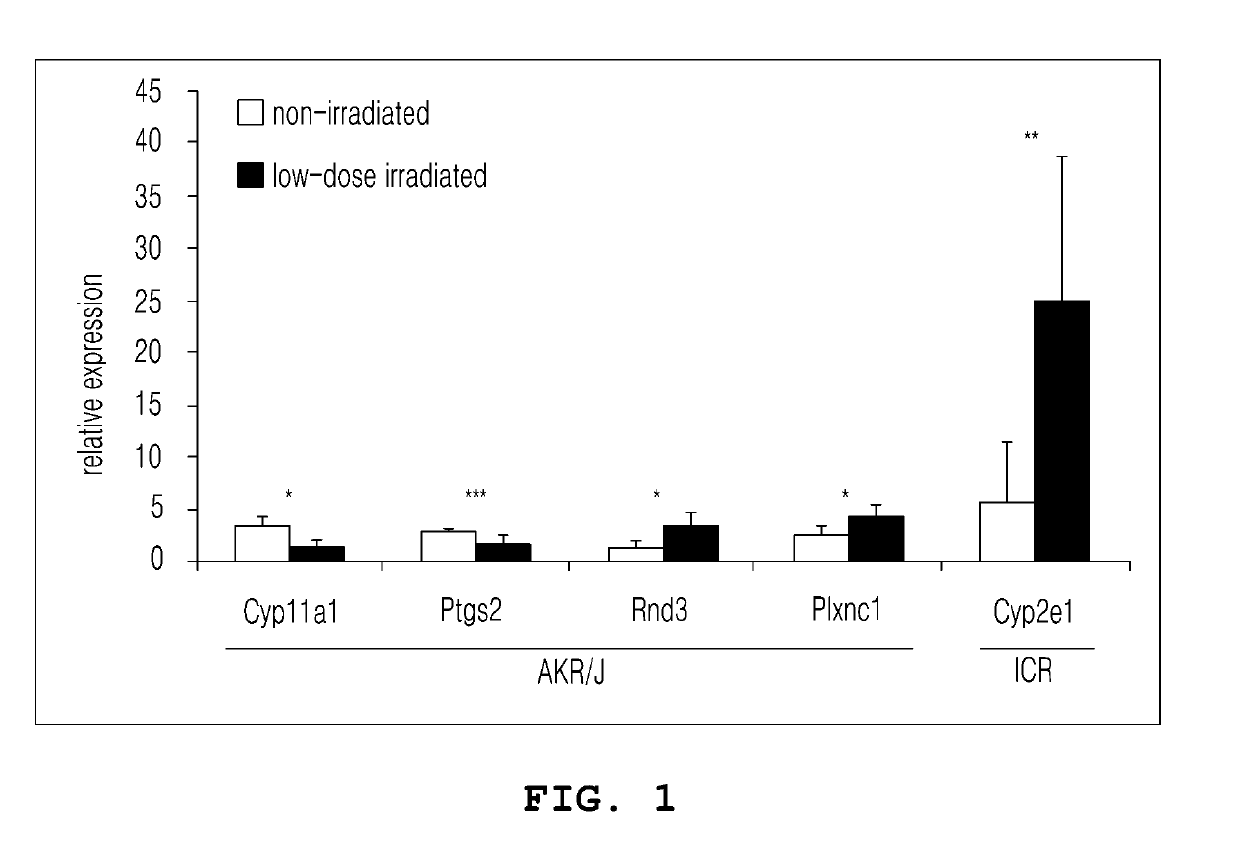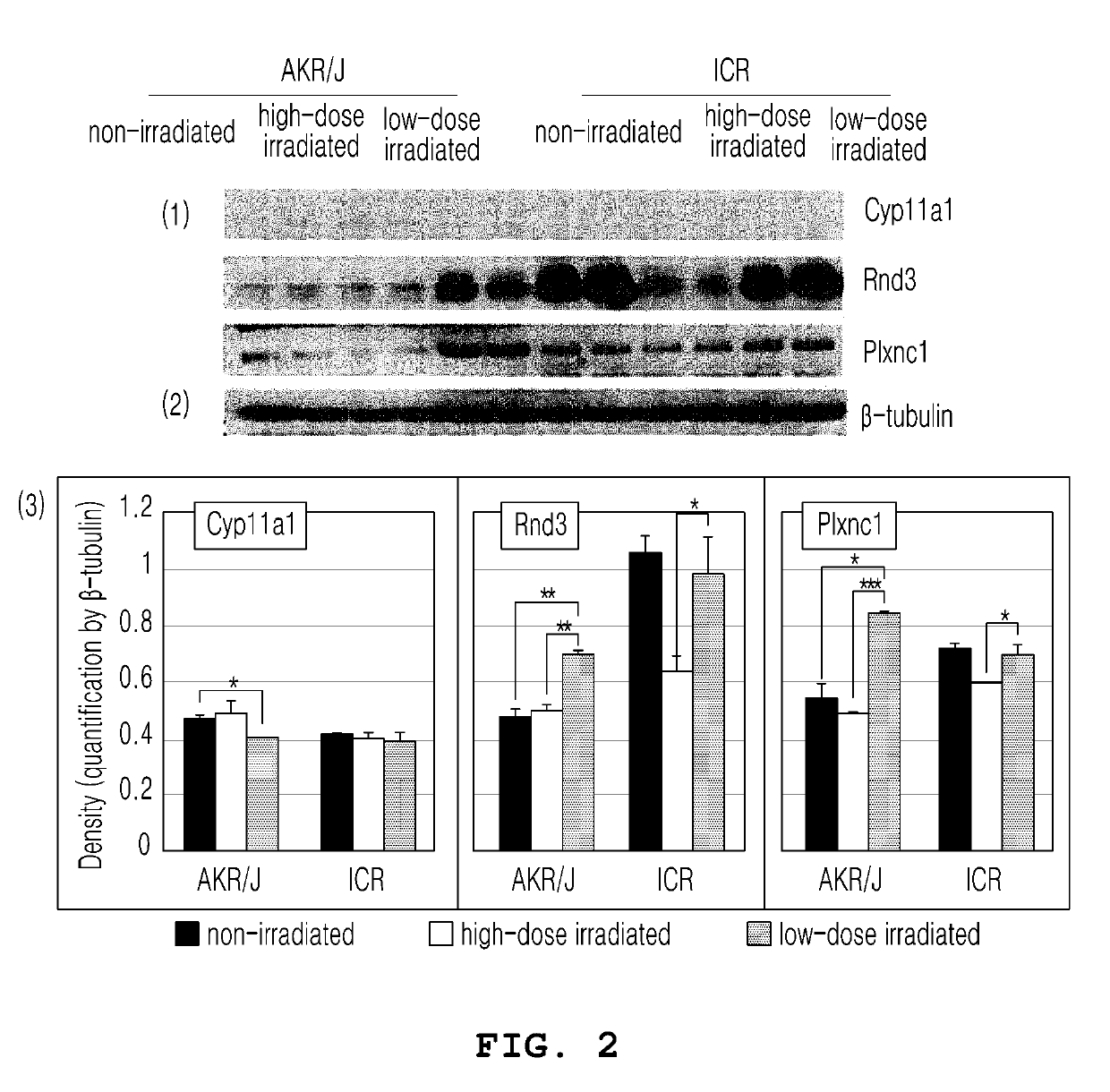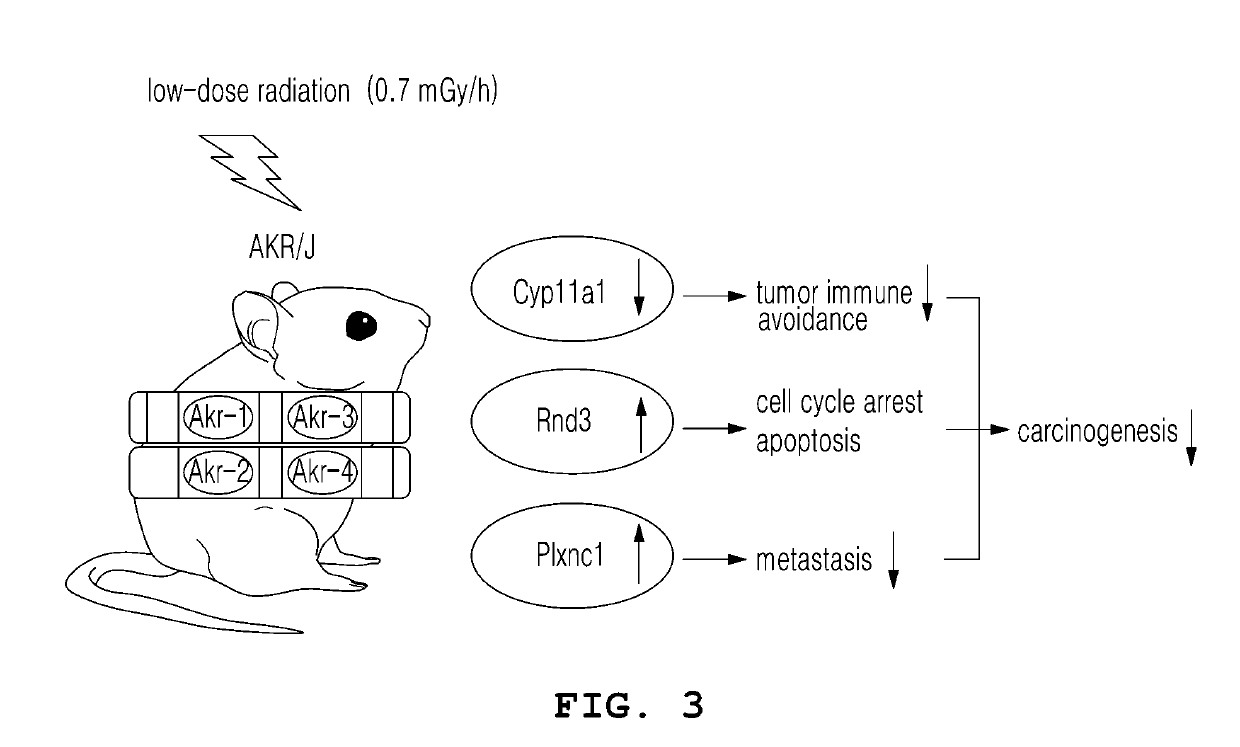Detection method for DNA repair-related genes which respond to low-level radiation
a dna repair and gene technology, applied in the field of detection of dna repairassociated genes responsive to low-level radiation, can solve the problem that no attempt has been made to compare the expression patterns of genes associated with dan damage and repair between healthy mi
- Summary
- Abstract
- Description
- Claims
- Application Information
AI Technical Summary
Benefits of technology
Problems solved by technology
Method used
Image
Examples
example 1
[0026]Seven-week-old female AKR / J mice and ICR mice were purchased from Shizuoka laboratory Center (Japan) and maintained under specific pathogen-free conditions for an adaptation period of one week. Five mice in each group were housed in a low-dose-rate (0.7 mGy / h) radiation facility for a period of 100 days until the total cumulative dose reached 1.7 Gy. Thereafter, thymuses were collected, rapidly frozen in liquid nitrogen, and analyzed for gene expression.
[0027]Gene expression patterns in the thymuses were compared between AKR / J mice and ICR mice, which were exposed to low-dose radiation. As a result, identified were DNA repair-associated genes responsive to low-dose-rate (0.7 mGy / h) radiation, and the genes were investigated for their functions.
[0028]The genes were analyzed using a Venn diagram, quantitative polymerase chain reaction, detection assay for specific proteins and the SAS statistical program (ANOVA, t-test).
[0029]For DNA repair-associated genes identified as radiati...
PUM
| Property | Measurement | Unit |
|---|---|---|
| density | aaaaa | aaaaa |
| antioxidant capacity | aaaaa | aaaaa |
| LENGTH | aaaaa | aaaaa |
Abstract
Description
Claims
Application Information
 Login to View More
Login to View More - R&D Engineer
- R&D Manager
- IP Professional
- Industry Leading Data Capabilities
- Powerful AI technology
- Patent DNA Extraction
Browse by: Latest US Patents, China's latest patents, Technical Efficacy Thesaurus, Application Domain, Technology Topic, Popular Technical Reports.
© 2024 PatSnap. All rights reserved.Legal|Privacy policy|Modern Slavery Act Transparency Statement|Sitemap|About US| Contact US: help@patsnap.com










